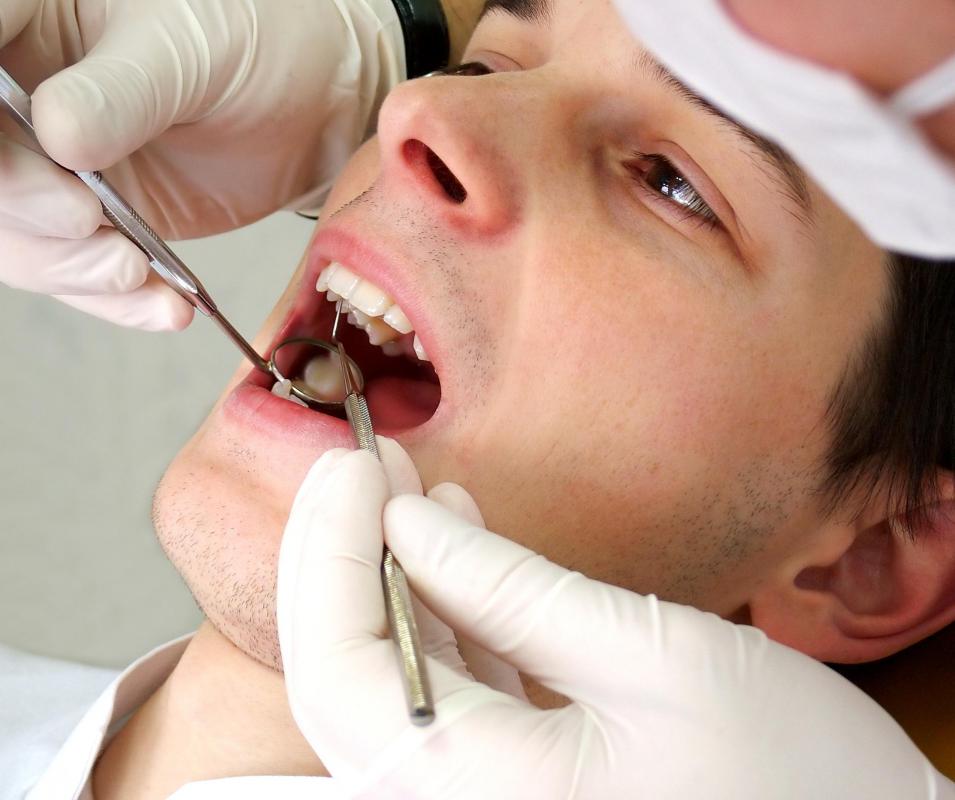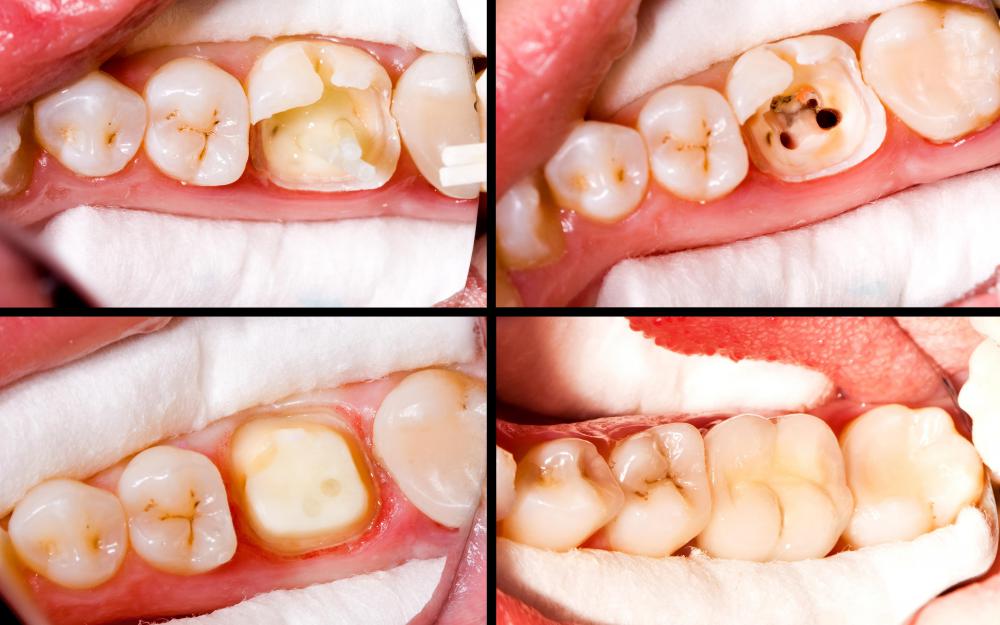At WiseGEEK, we're committed to delivering accurate, trustworthy information. Our expert-authored content is rigorously fact-checked and sourced from credible authorities. Discover how we uphold the highest standards in providing you with reliable knowledge.
What Is the History of Dentistry?
Evidence obtained from skeletal remains indicates prehistoric man performed the first dental treatments. During the Middle Ages, monks, and later barbers, assumed responsibility for tooth extractions and other primitive dental practices. Formal education and information related to oral hygiene did not emerge until the 1500s. Though recognized as a medical practice by the mid 1700s, only the wealthy acquired the services of a trained dental professional. In the 21st century, dentistry includes at least eight specific branches that deal with everything from filling cavities to cosmetic surgery.
Archaeologists believe the history of dentistry began around 7,000 BC. The teeth of human remains found in Pakistan contain what appear to be drilled holes. Scientists suggest early man used bow drills to make the cavities and found drill tips made from flint. An Egyptian named Hesy-Re, possibly a physician, documented dental procedures commonly performed in the year 2,600 BC. Aristotle and Hippocrates also wrote about dental health. Each philosopher described tooth extraction using instruments, treating tooth decay, and procedures using wire for tooth stabilization and jaw fracture repair.

Remedies for toothaches developed before the first century AD. Dental prosthetics, including gold crowns and replacement bridges, emerged as early as 166 AD. Considered the most educated people of the time, monks commonly provided community medical and dental care during the medieval era. This early history of dentistry also indicates that the Chinese developed a silver paste for filling cavities. Monks eventually educated and trained barbers in medicine, enabling some to perform surgeries and others assigned to common dental procedures.

A German by the name of Artzney Bucklein published the first book about dentistry in 1530. The textbook not only described oral procedures, but also discussed oral hygiene and diseases of the mouth. Antony van Leeuwenhoek discovered microscopic bacteria in 1683. Until this time, it was believed worms caused dental caries. Many consider the Frenchman, Pierre Fauchard, as being the father of modern dentistry. Fauchard published a textbook describing everything from dental anatomy to oral surgery and restorative processes.

Fauchard was also the first individual in the history of dentistry to equate sugar and acids with cavity formation. Wealthy patients received root canals, gold crowns and posts by the middle of the 1700s. Ivory dentures were also a luxury only obtainable by the affluent. The less fortunate population experiencing dental problems usually relied on the local blacksmith for extractions. Tooth powders and other remedies became available to the public about this time.

The term dentist, which comes from the French word dentiste, emerged during the mid 18th century. Before then, anyone performing oral procedures was known as a tooth operator. By the end of the century, John Greenwood had developed the first mechanical drill which was powered by a foot treadle. Soon the first dental chair emerged along with porcelain dentures. Charles Goodyear developed a method for hardening rubber in 1839 and dentists used this vulcanized rubber as the new base for dentures because porcelain had a tendency to crack. Physicians developed anesthesia by the middle of the century, which finally provided pain free dental procedures.

The history of dentistry continued into the 1900s, with the invention of Novocaine in 1901 and the discovery that fluoride prevented cavities in the 1930s. By World War II, communities added fluoride to community drinking water. Advancements in modern dentistry include the development of specialized instruments, adhesives and prosthetic appliances. Dentistry eventually evolved into specialized practices that include endodontics, orthodontics, periodontics and oral-maxillofacial surgery.
AS FEATURED ON:
AS FEATURED ON:















Discussion Comments
@irontoenail - The best advance in dentistry, as far as I'm concerned, is anesthetic. A lot of dentistry is basically just about making your teeth look good rather than improving their function. If I had to live in the past I wouldn't care so much about my teeth looking good as long as they worked and I could be numbed whenever one had to be extracted.
@clintflint - well, there are still parts of the world where the average person doesn't use toothpaste or go to the dentist and well water usually won't have added fluoride.
When I was traveling through some developing countries they all had some kind of way of cleaning their teeth though. They'd use a stick or particular leaves or something like that in order to clean them.
You've also got to remember that it is the modern diet that does so much damage to teeth. Fruit juices and sodas and sweet and starchy foods encourage bacteria and wear away enamel and that's what causes the problems. People who live on fruits and vegetables and meat won't have as many problems even if they don't have modern care.
I can't imagine living in a world where dentistry wasn't available to everyone. I mean, even if I don't go to the dentist as regularly as I should, I'm still drinking fluoridated water and using a toothbrush and floss and mouthwash, so my teeth are a hundred times better off than they would have been in the middle ages.
I mean, forget about the fact that teeth would have looked awful back then, they must have been constantly painful.
Post your comments